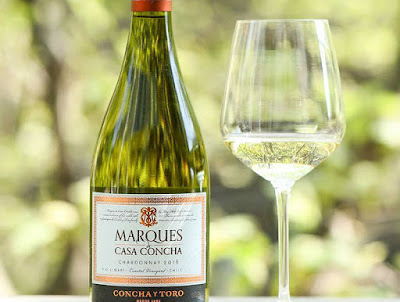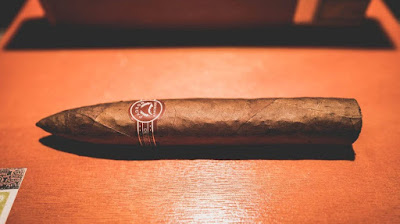This month the VIPgypsy Nation celebrates "Hispanic Heritage Month" in the Unites States of America and around the western world. In the past we have been asked by friends at high society events, festival carnivals, cruise ship parties and private events, if non speaking Spanish people can learn how to speak Spanish by listening to songs performed by some of the top Hispanic and Latino performers in the entertainment business of all time. We say, yes you can ladies and gentlemen. In this podcast episode we will spend some time breaking down how you can feel the Hispanic and Latino music. Dance to the styles of romantic, passionate Salsa, Mambo, Rumba, Reggaetón and Cumbia while learning to sing the music background chorus lines at the same time. Yes, its true, you don't need to know how to speak Spanish in order to feel the romance and passion during Hispanic Heritage Month. Because it's Caliente, Caliente, Caliente (Hot, Hot, Hot), with a little bit of Azucar ( Sugar) mixed in.

Nuevo Dia (New Day) (Gloria Estefan)
No Llores (Pit Bull remix) (Gloria Estefan)
Con Los Años Que Me Quedan (Gloria Estefan)
Besos de Lejos (Santana feat. Gloria Estefan)
Azucar Negra (Sarli's Azucar Negra) (Celia Cruz)
La Melodia (Joey Montana)
Hips Don't Lie (Shakira Feat Wyclef Jean)
Ran Can Can (Tito Puente)
Guantanamera (Celia Cruz)
Beautiful Maria of My Soul (Bella Maria de Mi Alma) [feat. Antonio Banderas]
Beautiful Maria of My Soul (Bella Maria De Mi Alma) (Los Lobos)
Hispanic vs Latino Americans
In the United States, Hispanic and Latino Americans are Americans who are descendants of people from Spain and Latin America. More generally, these demographics include all Americans who identify as Hispanic and/or Latino. In the United States, Hispanic and Latino Americans are Americans who are descendants of people from Spain and Latin America. More generally, these demographics include all Americans who "identify" as Hispanic and/or Latino. While the two terms are sometimes used interchangeably, for example, by the United States Census Bureau, "Hispanic" is a different term that refers to native speakers of Spanish, or have Spanish-speaking ancestry, while "Latino" is more frequently used to refer generally to anyone of Latin American origin or ancestry, "Latino" as a category used in the United States may be understood as a shorthand for the Spanish word latinoamericano or the Portuguese phrase latino-americano, thus excluding speakers of Romance languages from Europe. Both "Hispanic" and "Latino" are generally used to denote people living in the United States. Outside of the United States, the natives of Latin American countries refer to the names of their respective counties of origin, like "Guatemalan", "Honduran", "Nicaraguan", etc.
National Hispanic Heritage Month
National Hispanic Heritage Month is a period from September 15 to October 15 in the United States for recognizing the contributions and influence of Hispanic Americans to the history, culture, and achievements of the United States of America. Established by legislation sponsored by Representative. Edward R. Roybal of Los Angeles County, Hispanic Heritage Month began as Hispanic Heritage Week. Hispanic Heritage Week was established and signed into law by President Lyndon B. Johnson in 1968. The commemorative week was expanded to an entire month in 1988 (September 15 to October 15) by legislation sponsored by Representative. Esteban Edward Torres (D-Pico Rivera), amended by Senator Paul Simon and signed into law by President Ronald Reagan. September 15 was chosen as the starting point for the commemoration because it is the anniversary of independence of five Hispanic countries: Costa Rica, El Salvador, Guatemala, Honduras and Nicaragua, who all declared independence in 1821 from Spain. In addition, Mexico, Chile and Belize celebrate their independence days on September 16, September 18, and September 21 respectively during the commemoration 30 day period. During the 30 day period these countries celebrate with their own vibrant traditions, from parades to piñatas, dancing in the streets, honking truck horns with their country flag along side the flag of the united states and speeches from public officials.
The United States Census uses the words, Hispanic or Latino to refer to "a person of Cuban, Mexican, Puerto Rican, South or Central American, or other Spanish culture or origin regardless of race." The Census Bureau also explains that "origin" can be viewed as the heritage, nationality group, lineage, or a country of a person.
Another way to celebrate is to learn. Research important Latino figures in history or attend an educational Hispanic Heritage Month event near you, such as an art exhibit, Sabrosa potluck, movie, parade, festival or concert.
The Mexican President and the history of the "Cry of Dolores"
Every year on the eve of Mexican Independence Day, the President of Mexico re-enacts the cry from the balcony of the National Palace in Mexico City, while ringing the same bell Hidalgo (the gentlemen) used in 1810.
Then The amazing Latino group called "Los Lobos" will close us out in the English version of " Beautiful Maria of My Soul (Bella Maria De Mi Alma)", for this Hispanic romantic evening of language, dance food and history. Mucho Gracias mi Amigos y Señoritas, buenas noches!
Team VIPgypsy Nation





![Creole Étouffée (French: [e.tu.fe], English: /ˌeɪtuːˈfeɪ/ AY-too-FAY) Creole Étouffée (French: [e.tu.fe], English: /ˌeɪtuːˈfeɪ/ AY-too-FAY)](https://blogger.googleusercontent.com/img/b/R29vZ2xl/AVvXsEigiTP4aFoMpzYavvAKBFvW17mNYu_ORL-bdhoASU5874l0W3pLbcjUkagWprNRMb2OiSUA_r9lER1gs4Gv5Qq8bZNUAxtAdIMqGNgXmep6cLmqmO6ickG4qh0HrpFMDocyDV9cipsUG_g/s400/MovieNight_MexicoTrilogy7.jpg)






